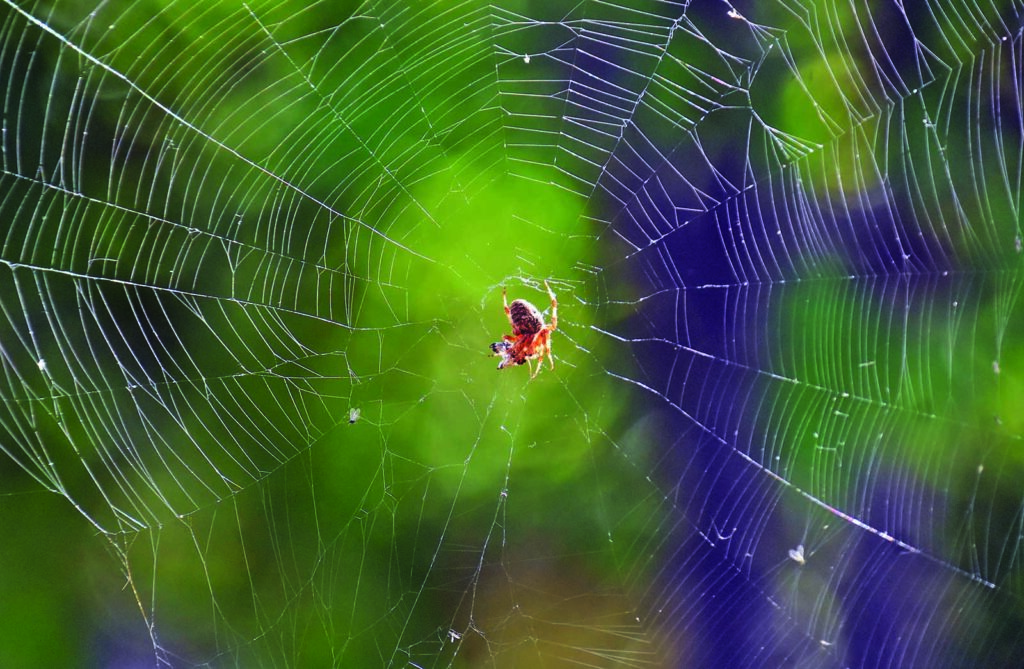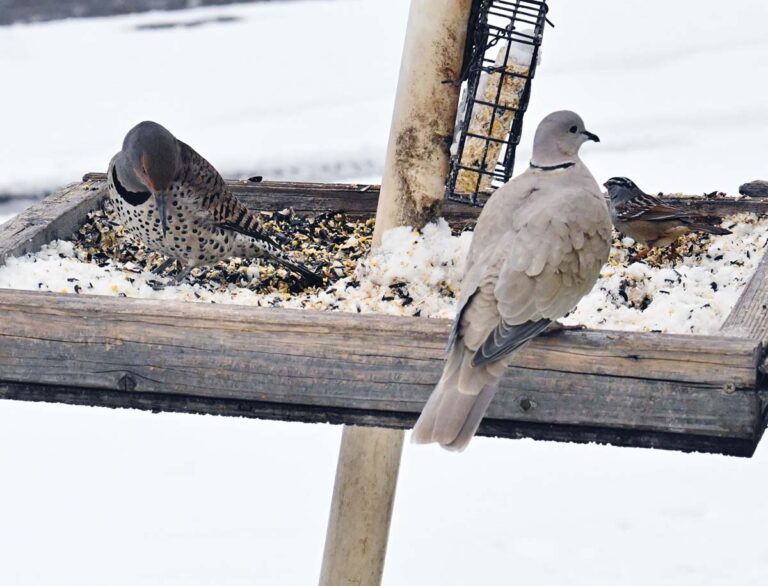In the July issue I had mentioned I rarely go on a wander without discovering a new mystery to be solved, or researched. This held true again on a recent outing.
This article has to do with those eight legged terrors known as spiders. We have all at one time walked directly into a spider web. Sometimes vacant, sometimes occupied. It can be an arm flailing display of the martial arts. Sometimes it’s a single strand web spanning five feet of hallway exactly at face level. Other times it’s waiting for you in the trees and shrubbery as you hurry along a trail in pursuit of that yellow bird. I have come face to face more times than I can remember with these webs, and typically the thumb sized homeowner. Even at my advancing age, and knowledge that spiders are for good not evil, it will take several minutes for my blood pressure to return to a doctor happy level.
The photo above is that of a cat-faced spider. About the size of a dime. The discovery of this arachnid was fascinating for two reasons. First was the fact I saw it without walking into it. Secondly, the fascinating design of its web. I’ve never really had an opportunity to stand and study an occupied web. Thus comes my mystery. How do they build such an impressive and well engineered creation? Something that size for size is as strong as steel. Spiders are not taught by a parent to build webs. Different species build specific webs for their environment and needs.
So how do they do it? Spiders typically have three glands at the base of their abdomen. These glands are called a Spinneret. Each with its own purpose. And to be used at the discretion of the carpenter. The spider is able to control the thickness as needed.
They will begin with a thicker silk to create edges, and anchor points. At times it is necessary to throw a silk rope some distance to create an anchor. By secreting the amount needed and allowing ever so slight a breeze to throw it, it will find its anchor. After the anchors are secure, the edges or shape is attached, and pulled taught.
Next comes another gland. It secretes a smaller finer silk to create nature’s own dream catcher, or bug catcher core if you will. The silk secretion is liquid and dries immediately when it touches air. You may wonder how the spider can avoid getting caught in his own trap while constructing.. It’s not sticky yet.
That’s where the third gland comes in. It secretes the sticky, and is spread in droplets across the core of the web. The spider can then sidestep the sticky substance, much like a ladder to retrieve its captives. Usually dispatching them with a single sting.
Not all spiders build a web as perfect as this. Some build no web at all. Such as the Wolf Spider or Tarantula. Preferring to ambush their prey from hiding.
There is much more to spiders than those eight legged monsters that go boo in the night. They are necessary, fascinating creatures. I have started relocating the “inside the house” spiders to outside, by use of a mason jar.
So next time you find a spider web, take a few moments to look at its incredible design. Then turn and run if need be. And remember the number one key ingredient of a hummingbird nest is spider web. See you on the trail.






